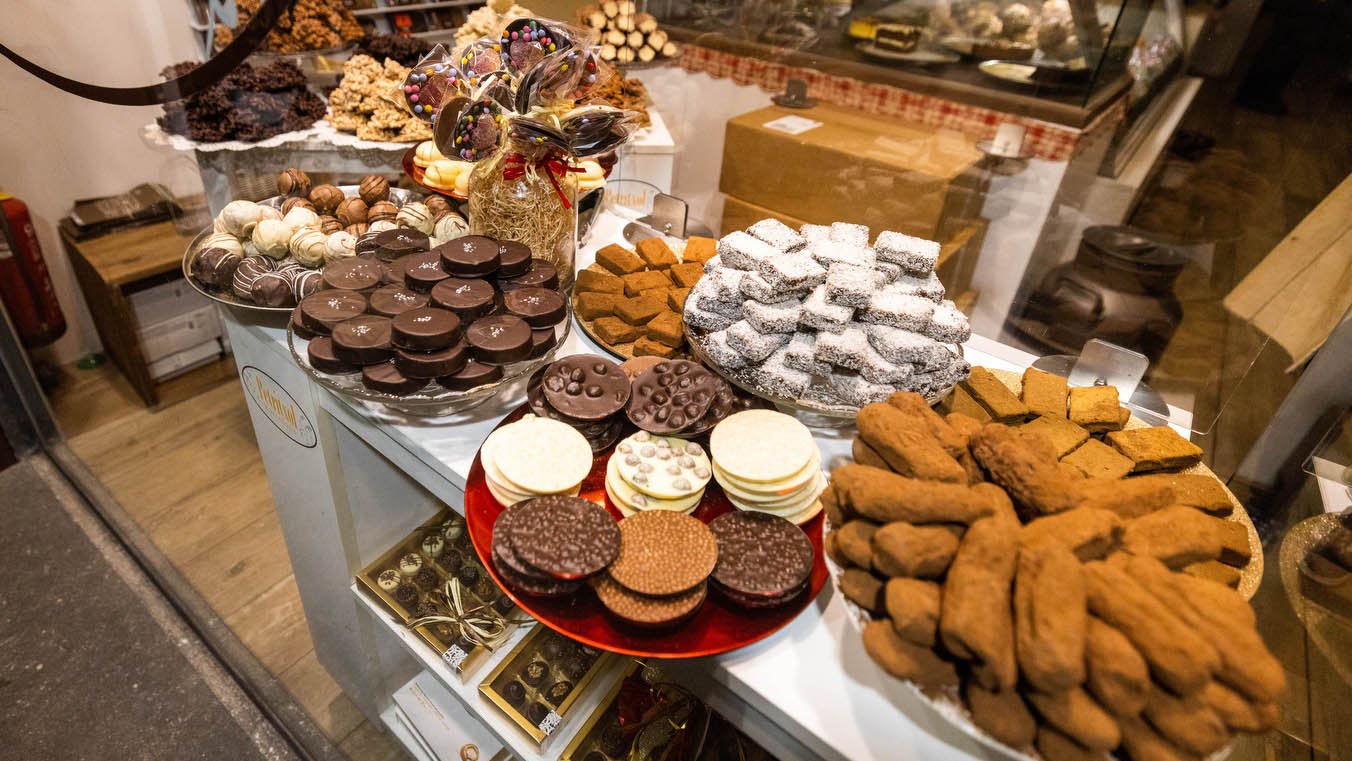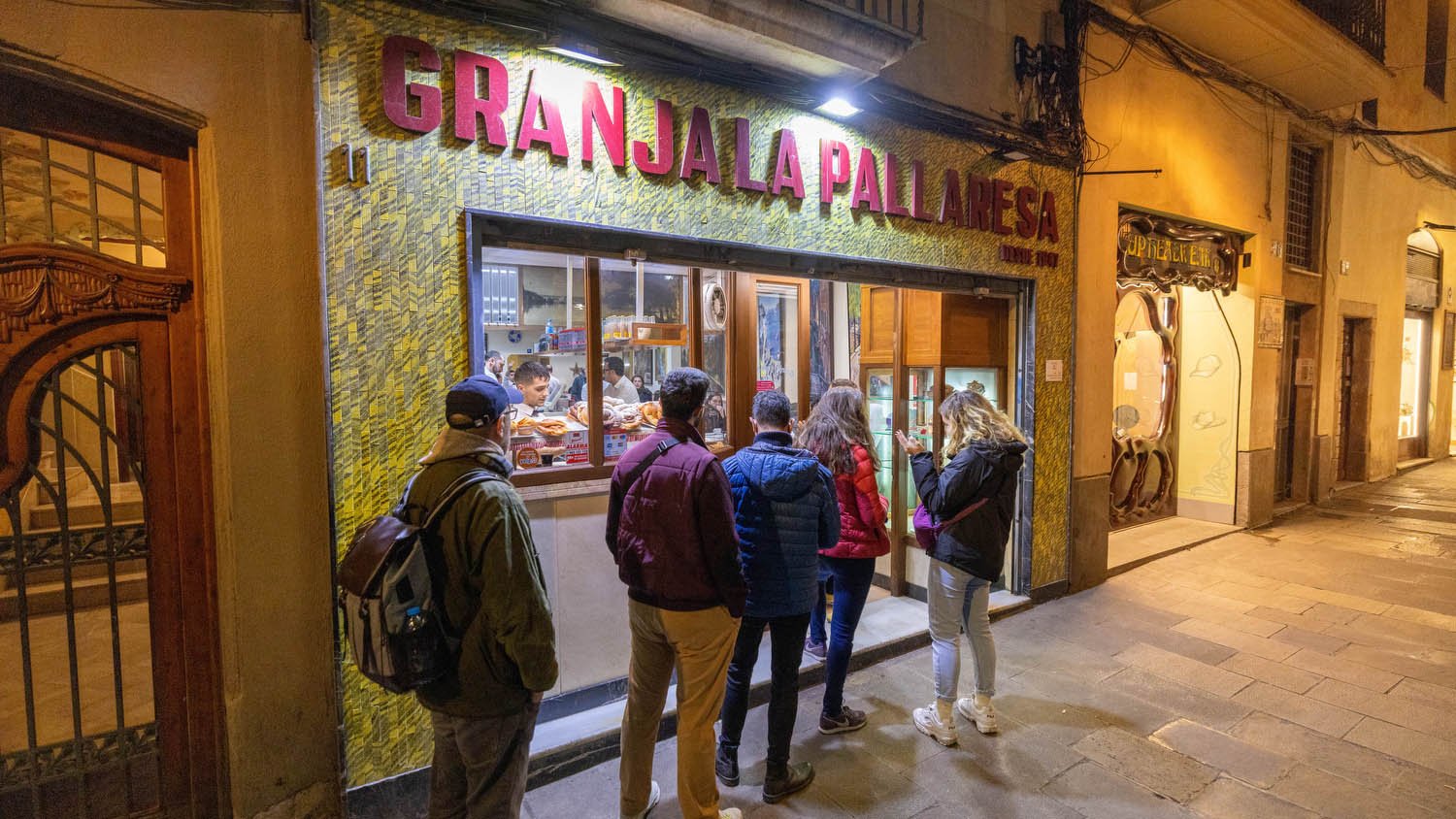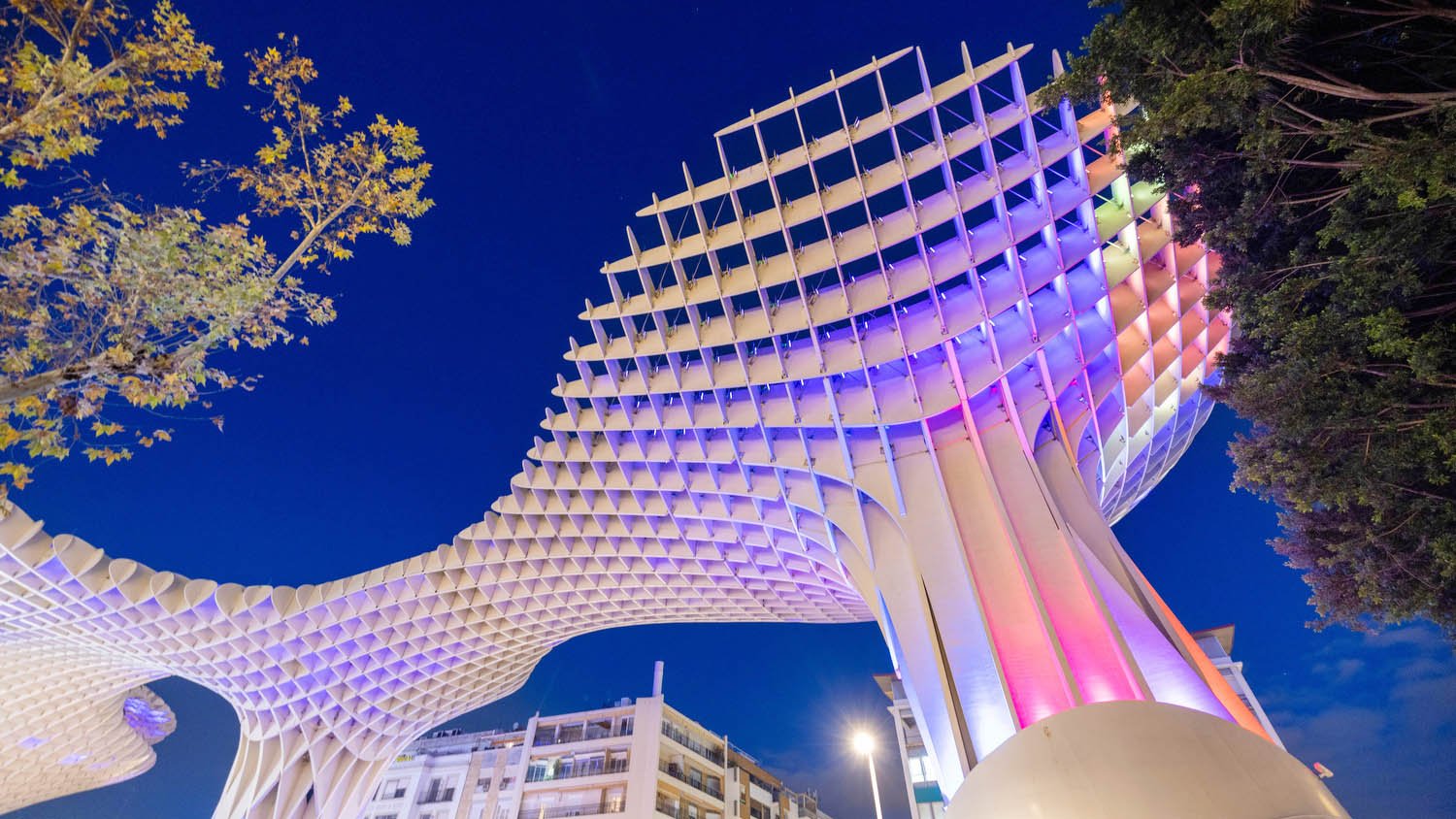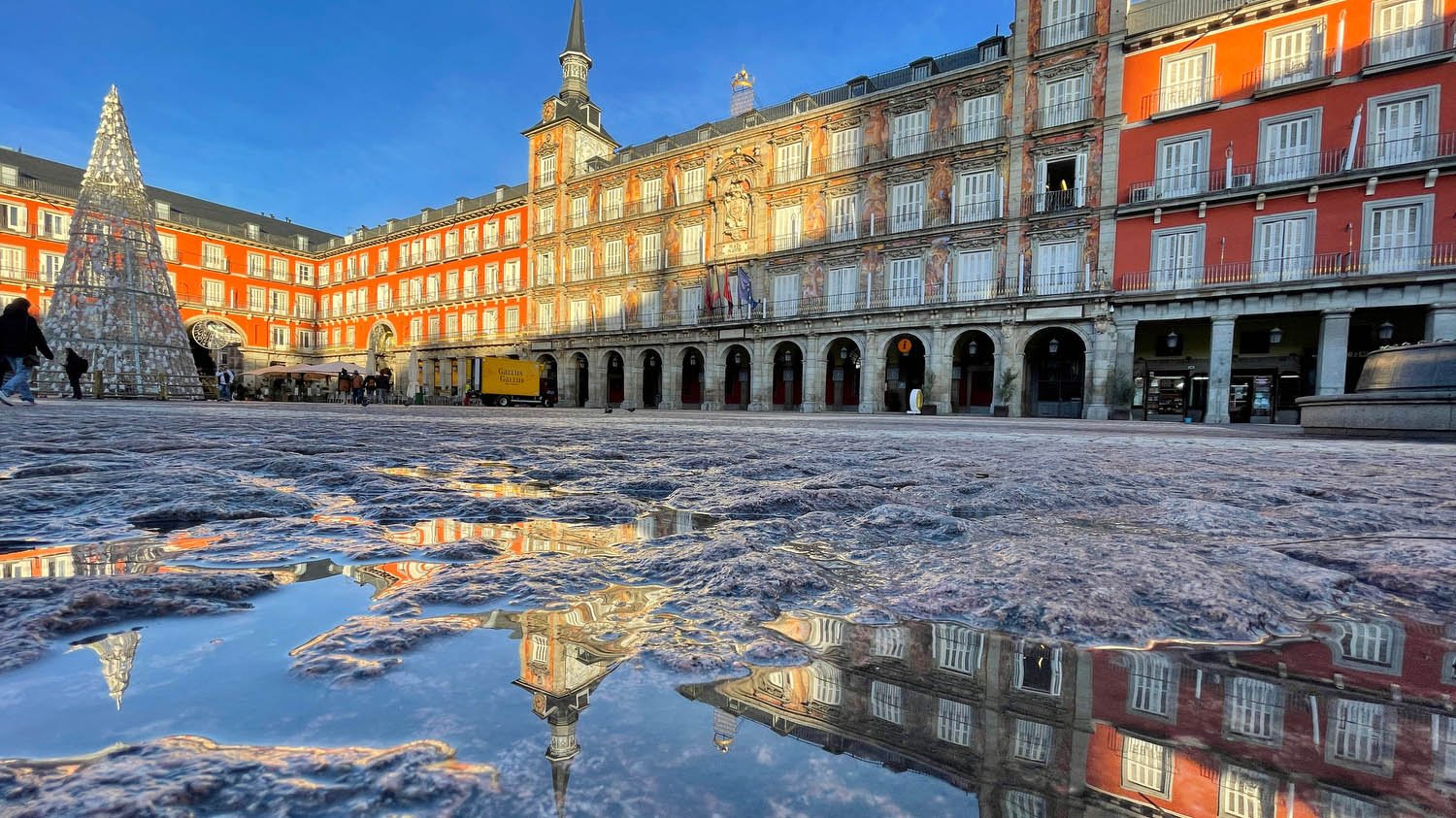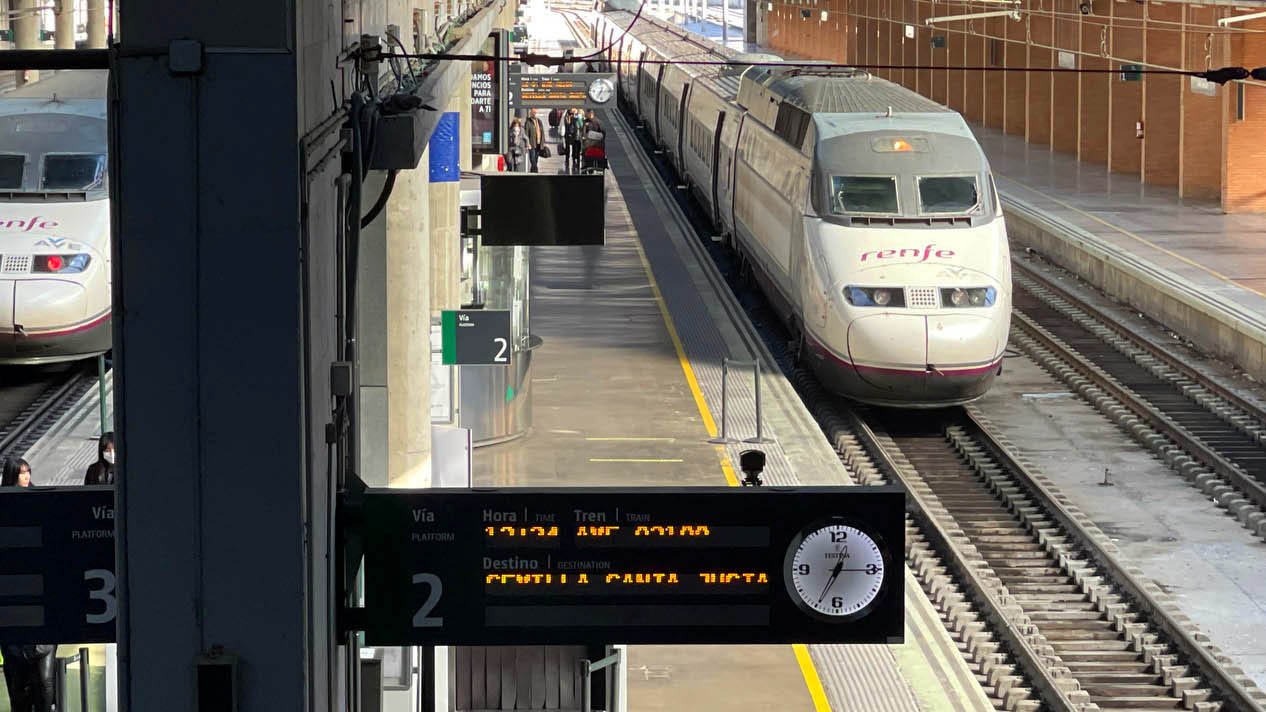Barcelona's "Chocolate Street" - Discovering Carrer Petritxol
Chocolate and churros at Granja La Pallaresa, Barcelona
When I learned that Barcelona has a street nicknamed “Chocolate Street”, I was intrigued. It sounded to me like a real-life incarnation of Willy Wonka’s factory. Turns out, there is more to it than the visions of sweet chocolate bears (or whatever) that were dancing in my head.
Carrer Petritxol - as it’s actually called, is one of the most historic and authentic streets of the Gothic Quarter. Though exploring this street is a subtle experience - you could almost miss the significance of it if you hadn’t at least given it a quick google - you will definitely wind up walking down this street at some point while exploring the Gothic Quarter. So here’s a little info to help appreciate it.
Where is Carrer Petritxol?
Carrer Petritxol is located in the Gothic Quarter of Barcelona, the oldest part of the city. Barcelona was actually founded by the Romans at the end of the first century BC, and the Gothic Quarter is where the original Roman city of “Barcino” was established. The area includes the remains of the city's Roman wall and several notable medieval landmarks.
Because the area is so old, it is a bit of a labyrinth, as streets were created at that time on a “as needed” basis. Legend states that Carrer Petritxol was created because, while under Muslim rule, Christians in the area wanted a shortcut to the only church available to them at the time, a small church on the outskirts of town dedicated to the Blessed Lady of the Pine Tree.
This church, though having undergone several restorations due to an earthquake, bombings, pillaging of its bells and ornaments, and ultimately arson (!) over the stormy history of the country, actually still stands.
So when you take your walk down Carrer Petritxol, you end up at Església de Santa Maria del Pi. It stands at a tiny square called Plaça del Pi, where we found a lovely little market with vendor stands of local foods.
The church itself features an exotic combination of Catalan Gothic architecture and modern refurbishments and can be toured for a small fee. It is open daily year-round from 10 am to 6 pm, and the best time to visit is during the daytime to appreciate the stained glass reflections.
The market at Església de Santa Maria del Pi.
Why is Carrer Petritxol called “Chocolate Street”?
It’s a bit of a mystery where the name “Petritxol” actually came from. Some say it was the name of a man who lived in the middle of the street or owned several houses there. Historians also have speculated that the word is adapted from the Catalan word for “portal”, describing a little door that the Christians were allowed to have to get to the Església de Santa Maria del Pi after they ran out of money to pave the street.
As it dates back more than 500 years, chocolate hadn’t even made it to Spain yet when the street was named. So what’s the deal?
Chocolate shops - or xocolateries In Catalan, the language of Catalonia - started popping up on this particular street as far back as the 17th century. Perhaps it was a warming treat on the way home from church on a wintry day!
No matter how it started, Barcelonians all know this street well as the most historic place to have xocolata desfeta - literally “melted chocolate” - and probably have memories of being taken there as kids by their parents.
Carrer Petritxol today features art galleries, jewelry, bookstores, and vintage shopping along with the “granges/xocolateries” that give it its affectionate nickname.
Where to have Xocolata on Carrer Petritxol
The long queues will usually point you to the best 'granja' café bars on Carrer Petritxol, but fortunately, they all seem to handle crowds well. Interestingly, “granja” means “farm” in Catalan and reflects back to a time when the animals were kept in the restaurant. You will see the word on the signs of many cafes in Barcelona.
Here are a few of the local favorite stops for xocolata on Carrer Petritxol:
Granja La Pallaresa - Serving excellent breakfasts and snacks since 1947, they are known for their classic thick cup of drinking chocolate ('a la tassa') and the version with unsweetened whipped cream on top ('suizo'). We enjoyed the traditional hot chocolate with churros. Though churros are always a favorite with hot chocolate, locals also enjoy the ensaimadas - there is even a plaque outside on the wall that commemorates the eating of ensaimadas at this establishment. We ordered at the counter and they brought it to our table. Delicious and inexpensive.
Granja Dulcinea - Established in 1941, this is the oldest xocolaterie on the street. Besides the famous hot chocolate and churros they serve an assortment of pastries and coffee.
Xocoa - This is the original shop of a popular high-end chain of chocolate boutiques. Started by a pastry chef and a DJ, who are grandsons of old-time pâtissiersit, it is a modern take on an old tradition. They specialize in chocolate bars flavored with aromatic herbs and teas.
Petritxol Cafe - another famous shop for xocolata desfeta & churros! It boasts a modern decor and all things chocolate.
More interesting facts about Carrer Petritxol - Barcelona’s “Chocolate Street”
Enjoy the walk - Carrer Petritxol was the first pedestrian street in Barcelona. In 1959, sidewalks were removed and vehicle access was forbidden. This is a modern trend today, in an attempt to make cities more liveable in the wake of the ever-increasing use of cars, but Carrer Petritxol has had this going on for decades. In the early days, a kind of rock was used to block the streets to not allow carriages to get through.
It’s all about the art - Art has always played a key role in the culture inherent to Carrer Petritxol. Today, the tiny historic lane houses many art galleries and shops that sell artisan works sure as jewelry, sculptures, paintings, glass works, and couture accessories. The focus is on quality materials and craftsmanship.
Galeria Maxo Petritxol, Barcelona
Along the walls of the lane, look for the many commemorative plaques dedicated to illustrious Catalan personalities. Many famous artists and personalities have either lived, worked or visited the street, and these are depicted in fantastic ceramic tiles along the walls.
One such work is that of l’auca del Senyor Esteve, based on the iconic novel by writer Santiago Russinyol. The complete story is illustrated comic book style in tiles through a panel of images and text.
Many other civic and traffic signs from past times decorate the walls as colorful and delightful curiosities.
Llibreria Quera - This 100-year bookstore is a landmark of the Carrer Petritxol. It’s much visited and much loved by locals and tourists alike. From the onset it has always focused on mountain-climbing, travel and expedition books and in recent years, it has started a new venture with a restaurant space. The restaurant is delightfully quaint and offers activities such as tastings, book presentations and editorial news events. You’ll probably need a reservation to eat here, though.
We are FareDrop customers and love it, they send airfare sales for your home airport right to your inbox. It’s great!
Note - This blog post contains affiliate links. This means that if we are recommending a product, activity, or hotel, we might be receiving a small commission if you buy or book from these links. This is done at no additional cost to you. We only recommend products we have personally used or have thoroughly researched.
Ganiveteria Roca - Since 1911, this store specializing in cutting tools, shaving products and kitchenware has occupied its space as Carrer Petritxol and it is one of those great speciality places. It was run by the same family until 2000, with the new owners continuing the legacy of high-end precision cutting tools using both traditional and modern techniques. The shop features a mind boggling collection of professional and collector knives, scissors, and razors, articles for personal care, domestic use, adventure and sewing, along with a full workshop for sharpening and repair.
Pablo Picasso - The artist Pablo Picasso has a connection to Carrer Petritxol. It is said that the gallery Sala Parés is where Picasso presented his first commercial gallery exhibition in 1901 at the age of 20. One of the oldest art galleries in the world, Sala Parés has been located at #5 since 1884. Of course there is a plaque commemorating this!
Another Picasso-ism is a painting on a door commemorating a painting he did for the original menu for Els Quatre Gats, a restaurant in Barcelona that became a gathering place for artists., and still exists today. This painting is not an actual Picasso, just a homage to his efforts as a young working artist in Barcelona in the late 1890s.
If you are particularly interested in Picasso, Barcelona has a very popular Picasso Museum as well!
Montserrat Caballé - The famous Catalan opera star, Montserrat Caballé worked for at time at the Comella House in the 1950’s, and it is said she also sang there. (and yes there’s a plaque!) Most interesting to me, she became known later for recording a song with Freddie Mercury entitled Barcelona, which was chosen as the theme song for the 1992 Olympic Games. Sadly, Mercury died in 1991, so he didn’t get to perform it at the Games, but the song was heard during Barcelona 1992 opening ceremony regardless, in honor of the rock legend. The song is lauded as one of the best cross-genre duets in history.
Our other Spain travel posts:
Granja Dulcinea
How to get to the Chocolate street in Barcelona, Carrer Petritxol
Carrer Petritxol is located in the center of the city, near Las Ramblas, the large boulevard which runs through the heart of the city in the Barcelona Gothic quarter.
Subway: L3 (Green line) Stop: Liceu.
Buses: V13, 59.
So I hope this guide has given you a little insight into the famous Chocolate Street and inspired you to visit for a luscious treat and a little bit of Catalan history. We found Barcelona to be a very welcoming city and should be on everyone’s bucket list.
For a great day trip only an hour out of the city, check out our blog post, Planning a day trip to Montserrat, Spain.
Read all our blog posts about traveling in Spain here.
“Barcelona the beautiful and wise, where I left so many things hanging on the altar of happiness…” ~ Pablo Picasso, 1936



